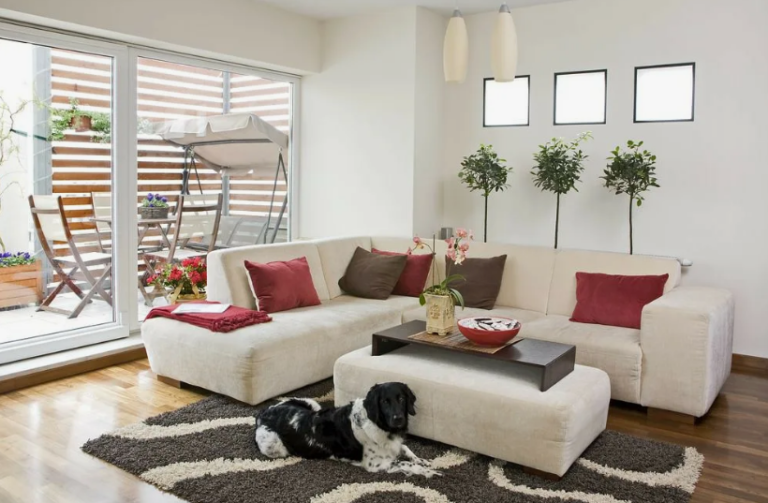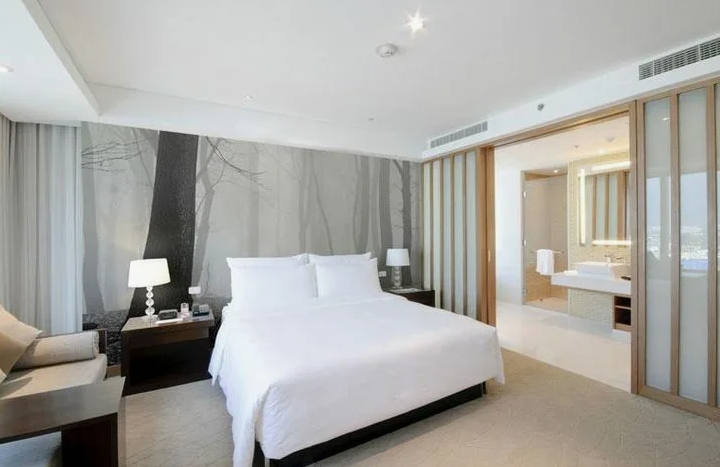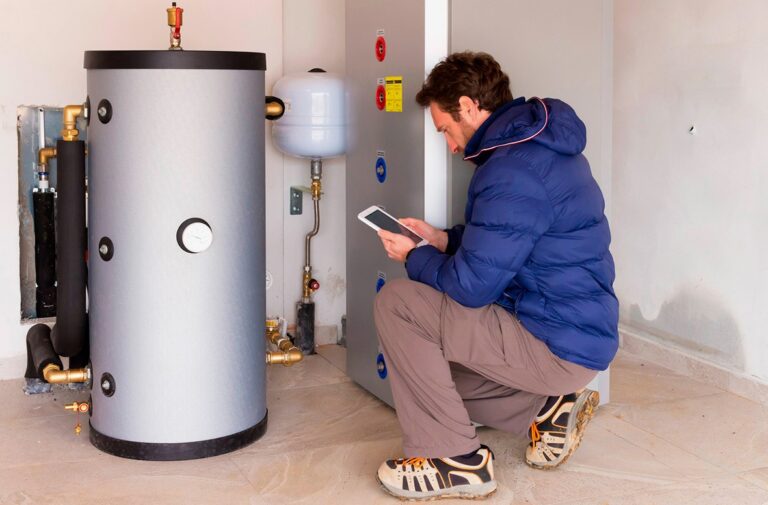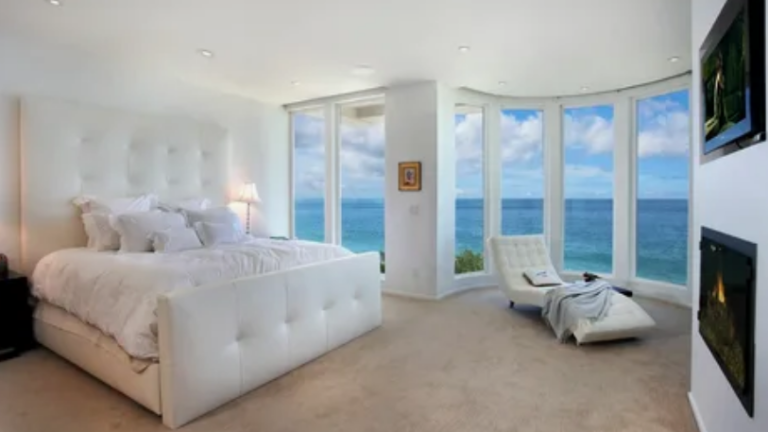Why Is My House Hotter Inside? Causes and Solutions: Have you found it unbearably hot inside your home, even when the air outside feels cooler? You’re not alone. Many homeowners experience this challenge, especially during the hotter months, and the reasons are more complex than you might think. From structural concerns to lifestyle habits, various factors could be causing your indoor space to feel persistently warm.
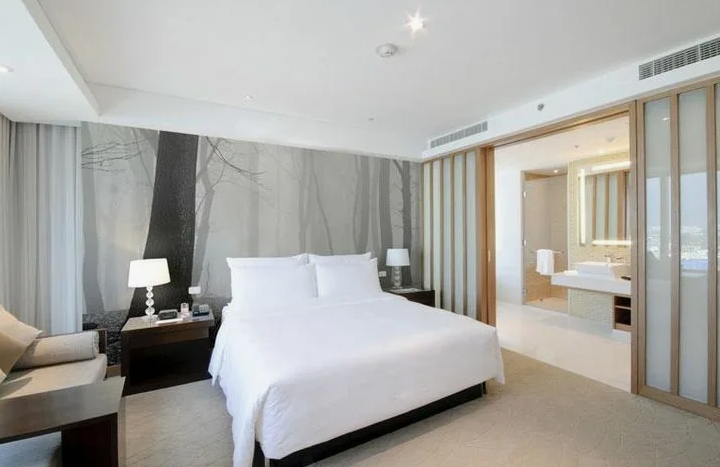
This guide will help you uncover why your house traps heat and, more importantly, give you practical solutions to make your home cooler and more energy-efficient. Whether you’re a homeowner looking for relief, an eco-conscious individual focused on sustainable solutions, or a DIY enthusiast eager to tackle the problem, this post will walk you through everything you need. If you’ve ever wondered Why Is My Bedroom So Hot? this guide will also offer specific insights to cool down that space.
Why Does Your Home Retain Heat?
Your home might feel excessively hot inside for several reasons, even when conditions outside are more comfortable. Factors like poor insulation, outdated ventilation systems, and even the materials your home is built with play a significant role. Below, we’ll explore the most common culprits behind this issue.
Poor Insulation
One of the leading causes of enduring indoor heat is poor insulation. Homes that lack adequate insulation allow outdoor heat to seep in while failing to trap cooler, conditioned air inside.
- Common signs of poor insulation:
- Hot spots near ceilings, attics, or windows
- Air conditioning struggles to maintain a cool temperature.
- Drafts or temperature differences between rooms
Solution:
- Install modern, energy-efficient insulation in walls, attics, and floors. Fiberglass, foam, and cellulose are popular, effective options.
- Seal gaps around windows and doors with weatherstripping.
Windows That Retain Heat
Your home’s windows could be heat magnets, especially if you have single-pane or poor-quality glass. Sunlight streaming through untreated windows can significantly heat your interiors.
- Key indicator:
- Rooms with large, sun-exposed windows become noticeably warmer during the day.
Solution:
- Invest in energy-efficient, double-glazed windows that reduce heat gain.
- Install reflective or heat-reducing window films to block UV rays.
- Use blackout curtains or cellular shades to limit sunlight during peak hours.
inefficient Ventilation
Without proper airflow, heat can become trapped inside your home. Poorly designed ventilation systems fail to circulate cool air effectively, exacerbating the problem in key areas like kitchens and bathrooms.
Solution:
- Ceiling fans can help improve airflow and create a cooling effect.
- Clean and service your HVAC system to ensure your air conditioning operates efficiently.
- Install vent fans in areas like bathrooms and attics to expel built-up heat.
Outdated Roofing Material
If made from heat-absorbing materials like dark asphalt shingles, your roof could work against your efforts to cool your home. Older roofs are particularly susceptible to retaining heat and worsening indoor temperatures.
Solution:
- Consider an incredible roofing system with reflective materials like metal or tiles in lighter colours to deflect sunlight.
- Use roof insulation or add a heat barrier under the roof to reduce heat transfer.
High Humidity Levels
Heat isn’t the only factor at play—humidity can make your home feel hotter than it is. This is especially common in regions with naturally high humidity levels during the summer months.
- High humidity creates a sticky, uncomfortable atmosphere indoors.
Solution:
- Use a dehumidifier to manage indoor humidity levels, ideally keeping them between 30–50%.
- Ensure all plumbing leaks are addressed to minimize moisture buildup.
Unnecessary Heat Sources
Everyday appliances and lighting can contribute more heat to your home than you might realize. Incandescent light bulbs, ovens, televisions, and even laptops generate heat as you use them.
Solution:
- Switch to LED bulbs, which emit less heat and are more energy-efficient.
- Limit heat-heavy appliances during the day—consider cooking in the early morning or evening.
- Unplug electronics and chargers when not used, as they generate heat even on standby.
Lack of Greenery or Shade
The landscape surrounding your home matters. A lack of greenery or shade can result in more sunlight hitting your roof and walls, raising indoor temperatures.
Solution:
- Plant trees or shrubs strategically to provide shade for your home.
- Use outdoor awnings or pergolas to cover sun-exposed areas like patios or windows.
How to Cool Down Your Home (Without Cranking the AC)
While turning up your air conditioning may feel like the easiest solution, there are more efficient and sustainable approaches than turning up your air conditioning. Here are additional cooling strategies to keep your home comfortable and eco-friendly.
Nighttime Ventilation
Take advantage of cooler evening temperatures by opening windows at night to allow fresh air. Pair this with a window fan to create cross-ventilation.
DIY Sun Protection
Simple solutions like reflective window films, light-coloured curtains, and thermal blinds can block heat from sunlight during the day.
Use Smart Technology
Invest in smart thermostats that adjust cooling based on your schedule, ensuring energy isn’t wasted cooling an empty home.
Optimize Ceiling Fans
Set your ceiling fans to rotate counterclockwise during the summer to create a cooling breeze. Fans don’t lower the temperature but make your home feel cooler by increasing air circulation.
Cool Paint Choices
Consider switching to lighter, reflective shades if your walls or roof are painted dark. Specialized “cool roof coatings” can significantly reduce temperature absorption.
Why Energy Efficiency Matters
Beyond comfort, optimizing your home for heat resistance ties into important issues like energy consumption and long-term costs. Improving your home’s efficiency will save on power bills and reduce environmental strain.
Additionally, energy-efficient upgrades can increase your property’s resale value—a win-win for homeowners looking to combine comfort with practical benefits.
Stay Cool and Comfortable Year-Round
Discovering why your home retains heat is the first step toward creating a cooler, more sustainable indoor environment. You can enjoy a more comfortable and energy-efficient living space without breaking the bank by tackling areas like insulation, ventilation, and appliances.
If you’re ready to take the following steps, assess your most significant pain points and try tackling one or two of the solutions above. Don’t hesitate to consult a professional for advanced projects like ventilation upgrades or incredible roofing installations.
Remember, a more extraordinary home isn’t just about relief—it’s about living smarter. Take action today and reap the benefits for years to come.
Why does one room in my house get so hot?
Several factors could cause one room to feel hotter than the rest of your house. One common issue is poor ventilation. If air isn’t circulating properly, it can get trapped, leading to heat buildup. Another reason could be the location of the room. Rooms with large windows facing the sun can absorb more sunlight and become hotter during the day. Additionally, inadequate insulation or leaky windows may allow hot air to enter or fail to keep cooler air inside.
Why is one room in the house so hot?
Rooms positioned on the upper floors often feel hotter because heat rises. If the attic above the room lacks insulation or proper ventilation, the heat absorbed by the roof can transfer into the space below. Another possibility is that your HVAC system may not distribute cool air evenly, leaving that room warmer than others.
Why does my house feel so hot?
If your entire house feels hot, it could be due to several structural factors. Poor insulation lets outside heat seep in and inside cool air escape. Single-pane windows or windows that face west and south can amplify heat absorption. Appliances and electronics can also generate heat—dishwashers, ovens, and even TVs add to the problem. Additionally, humidity levels in your home could make it feel warmer than it is by reducing the body’s ability to cool itself through sweat.
Why is my house so warm even when the AC is running?
Your AC might run inefficiently due to clogged air filters, low refrigerant levels, or leaks in your ductwork. Another problem could be inadequate attic insulation or poor sealing around doors and windows, which allows cool air to escape while heat infiltrates your home.
Why do you think it takes a long time to heat a room with a high ceiling?
Rooms with high ceilings take longer to heat because warm air naturally rises. This means the heat from your HVAC system must fill the room’s upper portions before you notice a difference in the living space below. The process becomes less efficient without fans or ventilation to push the warm air back down.
Why is it so hot in my room?
If your room consistently feels hot, it might be due to electronics generating heat, improper placement of vents, or sun exposure. A TV or computer running for hours can significantly raise a room’s temperature. Similarly, a vent blocked by furniture or curtains will prevent cool air from circulating effectively.
What goes inside the sun to make it hot?
The sun’s intense heat comes from nuclear fusion. Inside the sun’s core, hydrogen atoms collide and fuse to form helium. This process releases an enormous amount of energy through heat and light. The sun’s immense gravity and pressure make these reactions possible, maintaining its temperature at an astonishing 27 million degrees Fahrenheit in the core.
Why are mud houses cooler in summer and warmer in winter?
Mud houses benefit from the insulating properties of mud and clay. These materials have a high thermal mass so that they can absorb and store heat efficiently. During the summer, the walls absorb heat during the day and release it slowly, keeping the interiors cool. In the winter, the same process works in reverse, storing heat from the sun or other sources during the day and releasing it at night to keep the house warm.
Why does my house feel so hot even at night?
If your home retains heat at night, it may be due to poor ventilation. During the day, walls, roofs, and other solid surfaces absorb heat, slowly releasing it over time. Without proper air circulation, the hot air stays trapped inside the house. Using fans, opening windows, or installing ceiling insulation can help mitigate the problem.
Why is my house always hot?
If your house constantly feels hot regardless of the weather, it might be due to outdated or insufficient insulation, improper window placement, or roofing materials that absorb too much heat. Metal or dark-coloured roofing, for instance, is notorious for retaining heat. Upgrading to energy-efficient materials and sealing air leaks can make a significant difference.

